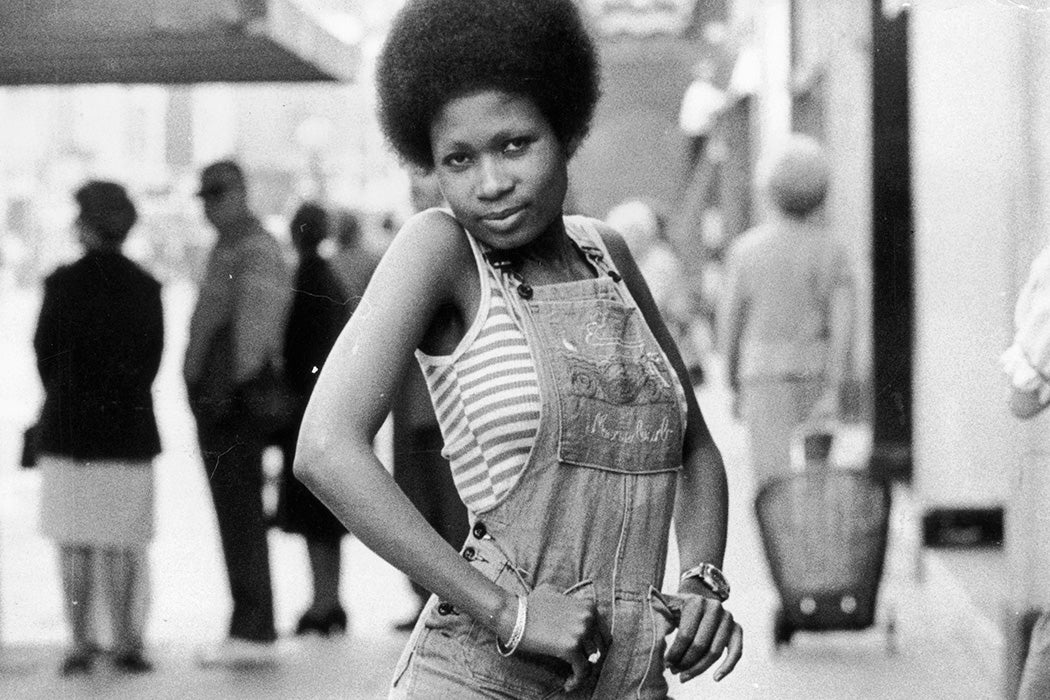In the early 1960s, Black women civil rights workers with the Student Nonviolent Coordinating Committee (SNCC) swapped their dresses for denim in emulation of the sharecroppers they worked among. This, writes scholar Tanisha C. Ford, was originally a “response to the realities of activism”—but denim quickly became the SNCC uniform, a “cultural and political tool deployed to create community and to represent SNCC’s vision for a new American democracy.”
“Young black women activists abandoned their ‘respectable’ clothes and processed hairstyles in order to adopt jeans, denim skirts, bib-and-brace overalls, and ‘natural’ hair,” writes Ford. These young women used this newfound “uniform consciously to transgress a black middle-class worldview that marginalized certain types of women and particular displays of blackness and black culture.”
The politics of clothing at first decreed that dressing for civil rights work meant donning one’s “Sunday best.” As Ford writes, “Movement leaders and many of the the students heralded the ‘respectable’ body as the most politically effective for a young activist to possess because this body was a direct affront to Jim Crow–era depictions of black womanhood.”
So, in the first sit-ins to desegregate southern lunch counters, Black women (and men) dressed well—before being smeared with food and assaulted by enraged segregationists.
But for voter registration and education work in the rural South, cardigans, dresses, and “modestly heeled pumps,” as prescribed by college dress codes, were highly impractical. Such clothing wasn’t safe, either, since it marked the women as interlopers in the eyes of law enforcement and groups like the Ku Klux Klan (who might very well be the same people). “Sexualized arrest tactics” by officers, including rape, were a constant threat.
SNCC soon saw its members thinking of themselves as “soldiers in the army,” fighting for freedom. Their uniform of choice became denim, the attire of the Black wage laborers and sharecroppers they worked with.
“The longer SNCC women worked among southern farm families, the more articulate and fervent the women’s questioning of ‘respectability’ became. And as this dialogue evolved, sharecropper attire emerged as the perfect style to make bold assertions about class.”
Weekly Newsletter
Some allies appreciated this non-flashy SNCC style. Others thought the students looked unkempt and dirty. Still others questioned the romanticization of sharecroppers by relatively privileged college students. SNCC member Debbie Amis Bell remembered her activist father telling her that laborers and domestic workers were only too happy to get out of their work clothes and into something clean when the working day was done.
Wearing denim had its limitations, writes Ford, but “SNCC women’s decision to wear denim was politically effective because it demonstrated the need to break down class barriers within the black community to gain greater freedoms.”







